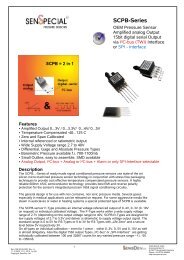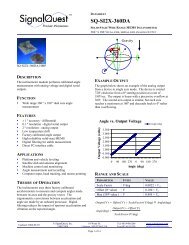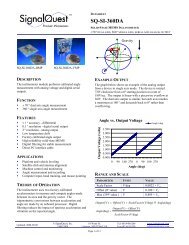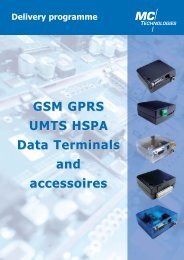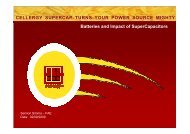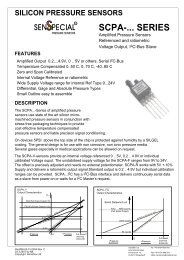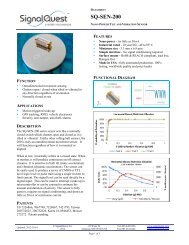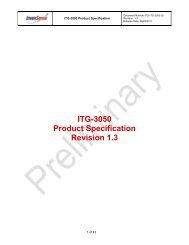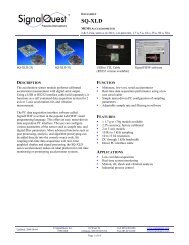MPU-6000 and MPU-6050 Product Specification Revision 1.0
MPU-6000 and MPU-6050 Product Specification Revision 1.0
MPU-6000 and MPU-6050 Product Specification Revision 1.0
You also want an ePaper? Increase the reach of your titles
YUMPU automatically turns print PDFs into web optimized ePapers that Google loves.
<strong>MPU</strong>-<strong>6000</strong>/<strong>MPU</strong>-<strong>6050</strong> <strong>Product</strong> <strong>Specification</strong>Document Number: PS-<strong>MPU</strong>-<strong>6000</strong>A-00<strong>Revision</strong>: <strong>1.0</strong>Release Date: 11/24/2010Additionally, the bus remains busy if a repeated START (Sr) is generated instead of a STOP condition.SDASCLSPSTART conditionSTOP conditionSTART <strong>and</strong> STOP ConditionsData Format / AcknowledgeI 2 C data bytes are defined to be 8-bits long. There is no restriction to the number of bytes transmitted perdata transfer. Each byte transferred must be followed by an acknowledge (ACK) signal. The clock for theacknowledge signal is generated by the master, while the receiver generates the actual acknowledge signalby pulling down SDA <strong>and</strong> holding it low during the HIGH portion of the acknowledge clock pulse.If a slave is busy <strong>and</strong> cannot transmit or receive another byte of data until some other task has beenperformed, it can hold SCL LOW, thus forcing the master into a wait state. Normal data transfer resumeswhen the slave is ready, <strong>and</strong> releases the clock line (refer to the following figure).DATA OUTPUT BYTRANSMITTER (SDA)DATA OUTPUT BYRECEIVER (SDA)not acknowledgeacknowledgeSCL FROMMASTER1 2 8 9STARTconditionclock pulse foracknowledgementAcknowledge on the I 2 C BusCONFIDENTIAL & PROPRIETARY 33 of 53



